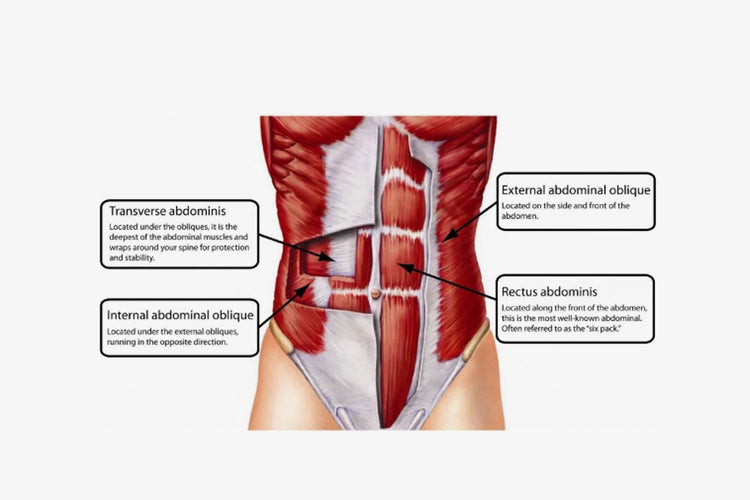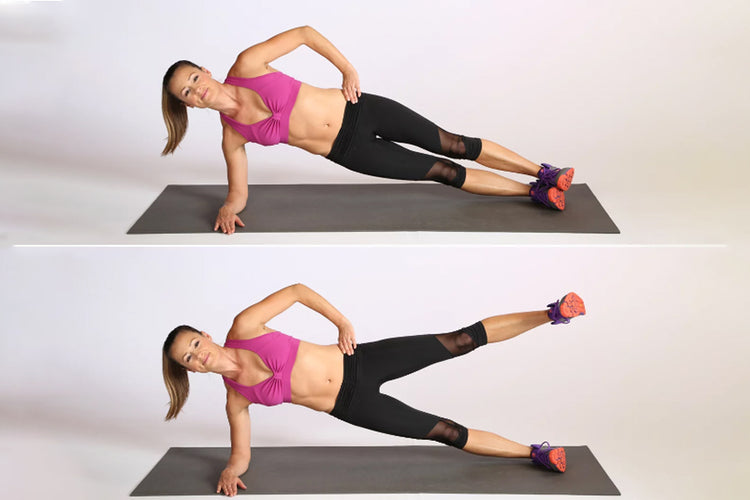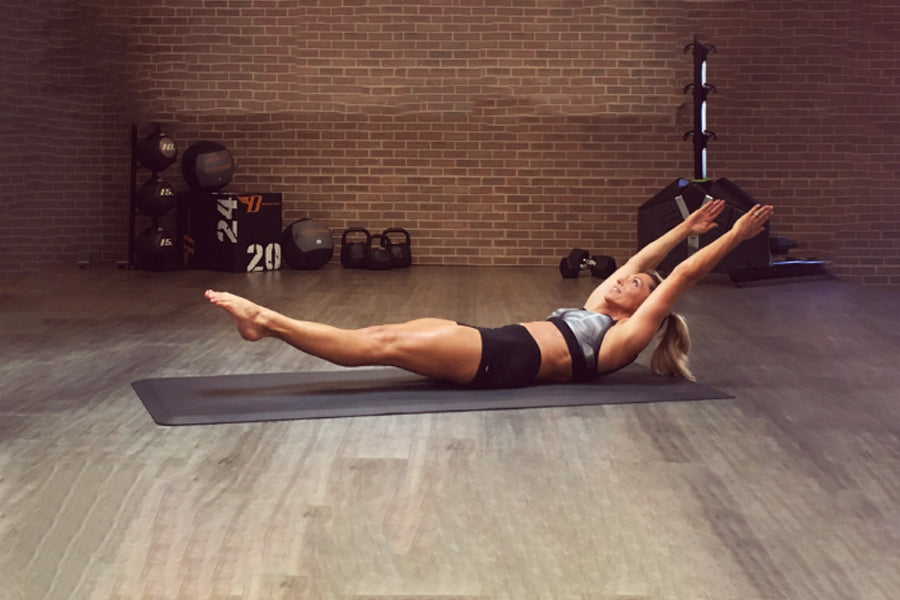A strong core is essential for good posture, stability, and balance. It comprises the abdomen, pelvis, and back muscles that work together to support the spine and enable movement. However, a weak core can lead to various health issues, including back pain.
Back pain is a prevalent problem affecting millions of people worldwide, and various factors, such as poor posture, muscle strain, or injury, can cause it.
While various treatments are available for back pain, exercise is an effective and natural way to alleviate pain and strengthen the core muscles.
This article will provide a 30-day workout routine to strengthen your core and relieve back pain.
In addition to relieving back pain, this workout routine will improve overall fitness and well-being. So let's dive in and learn more about the importance of core muscles and how they can help alleviate back pain.
Related Article: Workout Plan to Build Stronger Core & Strength
Understanding Core Muscles and Back Pain

The core muscles are responsible for maintaining good posture and supporting the spine. They include the rectus abdominis, obliques, transverse abdominis, and erector spinae muscles. The rectus abdominis is the muscle that runs down the front of the abdomen and is responsible for flexing the trunk.
The obliques are located on the sides of the abdomen and are responsible for twisting and rotating the trunk. The transverse abdominis is the deepest layer of the abdominal muscles and stabilizes the pelvis and spine. The erector spinae muscles run along the spine and are responsible for extending the trunk.
Weak core muscles can cause poor posture, which can strain the back muscles and lead to pain. For example, when the muscles in the abdomen are weak, the pelvis tilts forward, causing the lower back to arch excessively, which can cause lower back pain.
In contrast, when the muscles in the back are weak, the shoulders and head may slouch forward, leading to upper back pain.
A sedentary lifestyle, poor lifting techniques, or injury can cause back pain. For example, lifting heavy objects using the back muscles instead of the legs can lead to muscle strain and back pain.
In summary, strong core muscles are essential for maintaining good posture, stability, and balance. Weak core muscles can cause poor posture, muscle imbalances, and back pain. By strengthening the core muscles through exercise, we can alleviate back pain and improve our overall health and well-being.
Preparing for the 30-Day Workout Routine
Before starting any new exercise regimen, it's essential to consult a doctor or physical therapist, especially if you have a history of back pain or any underlying medical conditions. They can provide guidance on which exercises are safe for you to perform and how to modify them if necessary.
It's also important to start slowly and gradually increase the exercise intensity over time. Trying to do too much too soon can lead to injury and setbacks. If you're new to exercise, start with simple exercises like walking or swimming and gradually incorporate core strengthening exercises.
Proper form during exercise is also crucial to avoid injury and get the most out of your workout. Take the time to learn the proper form for each exercise and pay attention to your body. If something doesn't feel right, stop and seek guidance from a fitness professional.
In addition to exercise, it's crucial to maintain a healthy diet to support overall health and wellness. Eating a balanced diet that includes fruits, vegetables, whole grains, lean proteins, and healthy fats can provide the necessary nutrients to fuel your workouts and promote healing.
In summary, preparing for the 30-day workout routine involves consulting a medical professional, starting slowly and gradually increasing intensity, maintaining proper form, and following a healthy diet. Proper preparation can safely and effectively strengthen your core and alleviate back pain.
Related Article: Exercises to Ease Your Back Pain, Restore Your Health
The 30-Day Workout Routine
The 30-Day Workout Routine is designed to help you strengthen your core and relieve back pain through a structured plan that gradually builds in intensity over the course of 30 days. The main component of the routine includes core strength exercises.
Examples of core strengthening exercises include planks, crunches, and Russian twists. You can also use a Balance Board for Core Strength. It is essential to perform each exercise with proper form and technique to avoid injury and maximize the benefits of the exercise. The routine suggests performing three sets of each exercise for 10-15 repetitions.
You can also include 20-30 minutes of cardiovascular exercises, such as running, biking, or swimming, to improve endurance and burn calories. In addition to cardio exercises, supplement with a Fat Burner to burn calories. Cardiovascular exercise is essential for overall health and can help reduce back pain by promoting blood flow to the spine.
Here is a breakdown of the 30-day workout routine:
Workout Schedule
- Monday - Core and Back
- Tuesday - Core and Legs
- Wednesday - Rest
- Thursday - Core
- Friday - Core
- Saturday - Core and Glutes
- Sunday - Rest
Monday - Core and Back

This workout focuses on strengthening your core and back muscles, which are crucial for maintaining good posture and reducing back pain. Start with a series of planks, holding each for 30 seconds to a minute.
Then move on to exercises like Russian twists, bicycle crunches, and Superman's to work your obliques and back muscles. Finish off with some stretching to cool down.
|
Exercise |
Sets |
Reps |
Time |
|
Warm Up |
- |
- |
5 minutes |
- |
- |
30-60 seconds |
|
|
3 sets |
15 reps |
- |
|
|
30-60 seconds |
- |
- |
|
|
3 sets |
15 reps |
- |
|
|
3 sets |
10 reps |
- |
|
|
Cool Down |
- |
- |
5 minutes |
Tuesday - Core and Legs

In addition to targeting the leg muscles, exercises like leg raise, squats, and lunges also engage the core muscles. During movements, the core, obliques, and lower back muscles stabilize and support the spine and pelvis.
The core muscles maintain balance and stability during leg exercises, improving overall core strength and stability. This can also help to prevent injuries and alleviate back pain.
Incorporating leg exercises into your core workout routine can strengthen your legs and improve your core strength and stability, leading to a more balanced and functional body.
|
Exercise |
Sets |
Reps |
Time |
|
Warm-up |
- |
- |
5 minutes |
|
3 sets |
15 reps |
- |
|
|
3 sets |
10 reps |
- |
|
|
3 sets |
10 reps |
- |
|
|
3 sets |
10 reps |
- |
|
|
Cool-down |
- |
- |
5 minutes |
Wednesday - Rest
Thursday - Core

On Thursday, you'll focus on strengthening your core with exercises like mountain climbers, V-ups, and plank jacks. These exercises target your entire core, including your rectus abdominis, obliques, transverse abdominis, and lower back muscles.
The hollow hold and dead bug exercises also engage your core muscles and improve overall stability.
|
Exercise |
Sets |
Reps |
Time |
|
Warm-up |
- |
- |
5 minutes |
|
3 sets |
10-15 reps |
- |
|
|
3 sets |
- |
30-60 seconds |
|
|
3 sets |
- |
30-60 seconds |
|
|
3 sets |
10-15 reps |
- |
|
|
3 sets |
10-15 reps |
- |
|
|
Cool-down |
- |
- |
5 minutes |
Friday - Core

On Friday, you'll continue strengthening your core with ab wheel rollouts, side plank crunches, and lying leg twists.
These exercises will challenge your core muscles and help improve your overall core strength and stability. Adding scissor kicks and flutter kicks will also help to work your lower abs and obliques, helping you achieve a well-rounded core workout.
|
Exercise |
Sets |
Reps |
Time |
|
Warm Up |
- |
- |
5 minutes |
|
3 sets |
10-15 reps |
- |
|
|
3 sets |
10-15 reps (Each Side) |
- |
|
|
3 sets |
10-15 reps (Each Side) |
- |
|
|
3 sets |
10-15 reps |
- |
|
|
3 sets |
- |
30-60 seconds |
|
|
Cool Down |
- |
- |
5 minutes |
Saturday - Core and Glutes

The core and glutes are essential for maintaining good posture and reducing lower back pain. The exercises include side planks with leg lifts, clamshells, and mountain climbers. Side planks with leg lifts work your obliques and glutes, while clamshells isolate your glutes. Mountain climbers are a great cardio exercise that also engages your core. Cool down with some stretches for your hips and legs.
|
Exercise |
Sets |
Reps |
Time |
|
Warm-up |
- |
- |
5 minutes |
|
3 sets |
10 reps (Each Side) |
30 seconds |
|
|
3 sets |
12 reps |
- |
|
|
3 sets |
10 reps |
- |
|
|
Cool-down |
- |
- |
5 minutes |
Repeat this 7-day cycle for 4 weeks (30 days) to complete the workout routine. Remember to listen to your body and modify the exercises if needed.
This 30-day workout routine is designed to be progressive, with each week increasing in intensity. By the end of the 30 days, you should feel stronger, more energized, and experience a reduction in back pain. Listen to your body, modify exercises as needed, and consult a medical professional if you experience pain or discomfort.
Tips for Success
It's important to emphasize the significance of starting slowly and building up gradually. If you push yourself too hard too quickly, you may risk injury and burnout, ultimately setting you back on your fitness journey.
Instead, start at a comfortable pace and gradually increase the intensity and duration of your workouts as your body adapts. Staying consistent is also crucial for achieving success. You may be tempted to skip a workout here or there, but it's essential to stick to the plan as closely as possible to see the best results.
Consistency helps establish a routine and make exercise a habit, which can ultimately lead to long-term success. The form is another important aspect of the 30-day workout routine. Proper form helps to ensure that you're targeting the right muscles and reducing the risk of injury.
If you're not sure how to perform an exercise, don't hesitate to ask a trainer or seek out instructional videos online. Listening to your body is essential for avoiding injury and staying on track with your fitness goals. If you experience pain or discomfort during a workout, taking a break or modifying the exercise is essential. Pushing through pain can ultimately do more harm than good.
Incorporating healthy habits like eating healthily, staying hydrated, and getting enough sleep is also crucial for overall health and wellness. Exercise is just one piece of the puzzle; taking care of your body in other ways can help you achieve your fitness goals more effectively. Finally, celebrating your progress and accomplishments can be a powerful motivator to keep going.
Recognizing and celebrating small milestones along the way, like being able to hold a plank for longer or noticing improvements in back pain, can help you stay motivated and committed to your fitness routine.
Final Words
The 30-day workout routine that focuses on strengthening your core and relieving back pain can be an excellent way to improve your overall health and fitness. Incorporating various exercises targeting the core and back muscles can reduce pain, improve posture, and enhance your overall fitness level.
However, it's essential to start slowly and build up gradually, stay consistent, prioritize form, listen to your body, and incorporate healthy habits to support your fitness goals. With dedication and commitment, you can complete the 30-day routine and continue to see progress in your fitness journey beyond the initial 30 days. So why not start today and take the first step towards a stronger, healthier, and more active lifestyle?











